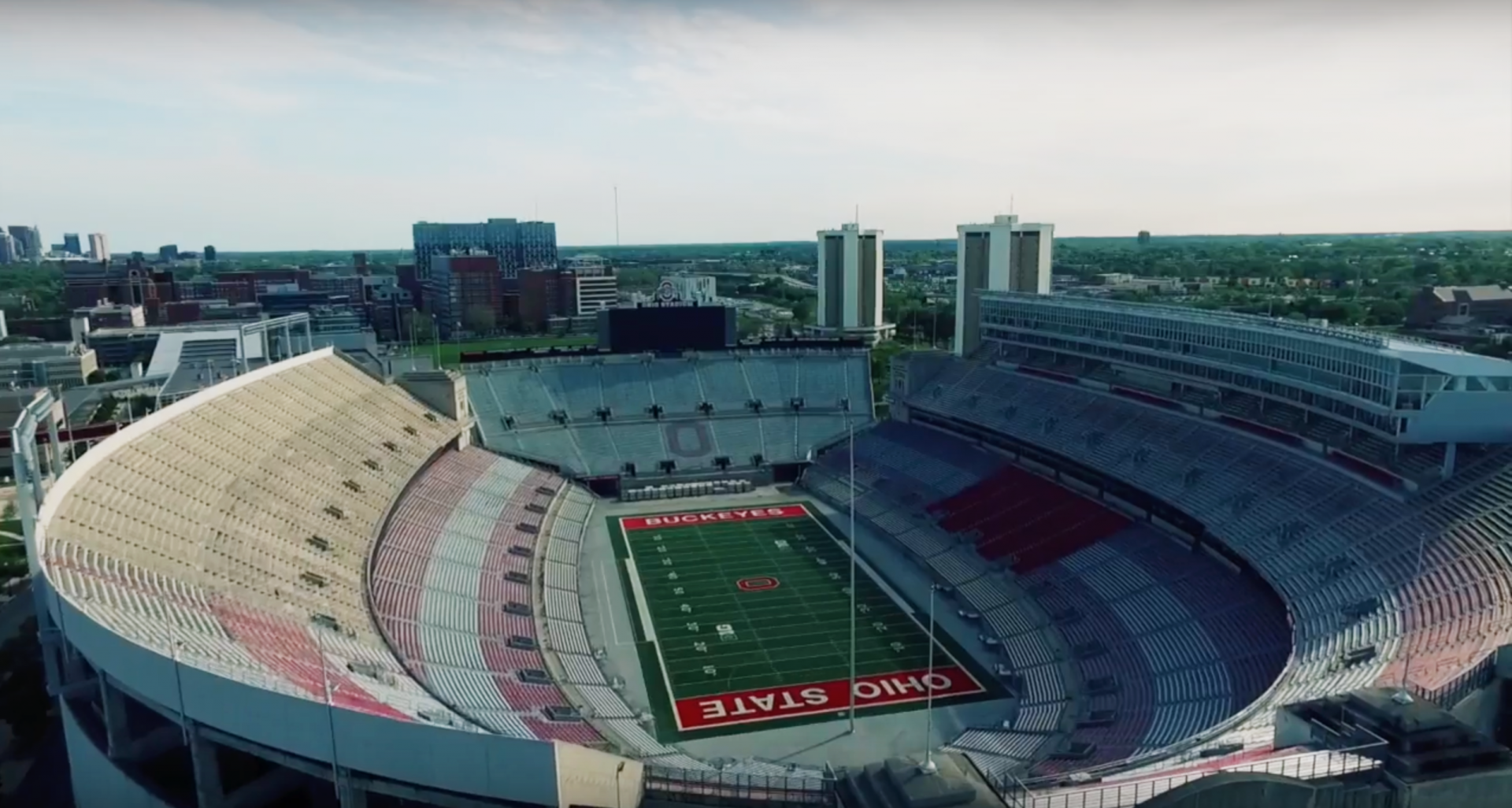
Beer became available for purchase at football games during the 2016 season and coincided with a major decline in reported alcohol-related incidents. Credit: Jack Westerheide | Photo Editor
When Ohio State announced its stadium-wide beer sales for the 2016 football season, its effect on alcohol-related incidents on gameday was a question. However, the policy change coincided with a major drop in overall alcohol-related incidents compared to previous seasons.
In the Buckeyes’ seven home games last season, University Police — in collaboration with the Ohio Investigative Unit, Columbus Division of Police, Ohio State Highway Patrol and the Franklin County Sheriff’s Office — responded to 61 total incidents, compared to 175 in 2015 and 269 total incidents in 2014, based on records obtained by The Lantern.
The Department of Athletics and University Police spoke to officials at other universities that instituted in-stadium alcohol sales to gauge the results Ohio State might have if adopting a similar policy, said University Police Chief Craig Stone. They found that universities with in-stadium sales had less incidents year to year than the years without in-stadium sales, which led to their adoption of the stadium-wide policy in 2016.
For the 2016 season, the Department of Public Safety recorded 26 arrests inside the stadium, 25 ejections, six arrests outside the stadium and four citations. In 2015, when alcohol was sold exclusively to fans at the suite and club level, there were a total of 85 ejections, 18 in-stadium arrests, seven out-of-stadium arrests and 65 citations.
Sunder Sai, a fourth-year in neurology and member of Undergraduate Student Government’s safety committee, collected and studied gameday incident data from the past five years to determine the reason Ohio State was seeing less incidents on football Saturdays.
He said the opportunity to purchase beer inside the stadium and the university’s no-bag policy limited the amount of alcohol consumed outside the stadium, as well as reduced the amount of alcohol coming into the stadium illegally.
“At first we thought it would be counterintuitive because you’re selling alcohol in the venue,” Sai said.
However the data proved otherwise.
“The thing that I was seeing in my research was that by providing alcohol in the stadium, students and guests were having the opportunity to drink more moderately in the stadium before and after the game,” Sai said. “And so that when they enter the stadium, they knew they had the opportunity to buy a beer if they were of age and that would reduce the incidents of misconduct.”
According to public safety data, the number of gameday incidents increased from 165 in 2012 to 269 in 2014.
In 2016 data, only the Tulsa game had fans receive alcohol citations. Stone said being issued a citation means to be issued a summons to appear in court. Citations are often given to people consuming alcohol under legal drinking age or to those who supply alcohol to someone underage.
The Rutgers game had the most alcohol-related arrests with nine, and Nebraska, which was an 8 p.m. kickoff, had 12 stadium ejections. The Michigan game had seven ejections and one in-stadium arrest.
The two night games in 2015, against Penn State and Minnesota, had 48 total ejections and 31 alcohol citations. Fifteen citations and 15 ejections were recorded for the home-season finale against Michigan State.
Even without the night games, Sai said the number of incidents per year continue to decline.
He said other variables affecting the decreasing trend line could be responsible drinking policies in the stadium, the bag check and the fans drinking alcohol in moderation.
The increase of 2016 arrests resulted from there being more alcohol in the stadium and more plainclothes officers from the Ohio Investigative Unit present in the stadium, Stone said.
Sai said the majority of the arrests in the stadium came from students illegally purchasing alcohol or legally purchasing alcohol to pass the drink to someone underage.
Athletics and Levy Restaurants, the university’s concessions vendor, announced yesterday they are limiting one drink per ID in the south stands, where the majority of students sit at games.
Stone said the 2017 football season will be more telling than 2016, as the first year of stadium-wide beer sales is essentially a baseline for the newly introduced practice.
“This year will be a year we can compare to see what those numbers were from 2016 to 2017,” Stone said.
Ohio State generated $1,166,497 from beer sales in 2016. That money is being used to fund four new, full-time university police officers at an annual cost of $600,000, “increased security at football games and funding for the center for alcohol and substance abuse,” said Dan Hedman, university spokesman for the Office of Administration and Planning.
Editor’s note 9/8: The article has been updated with inclusion of the Ohio State Highway Patrol and the Franklin County Sheriff’s Office in the gameday public safety operations.


